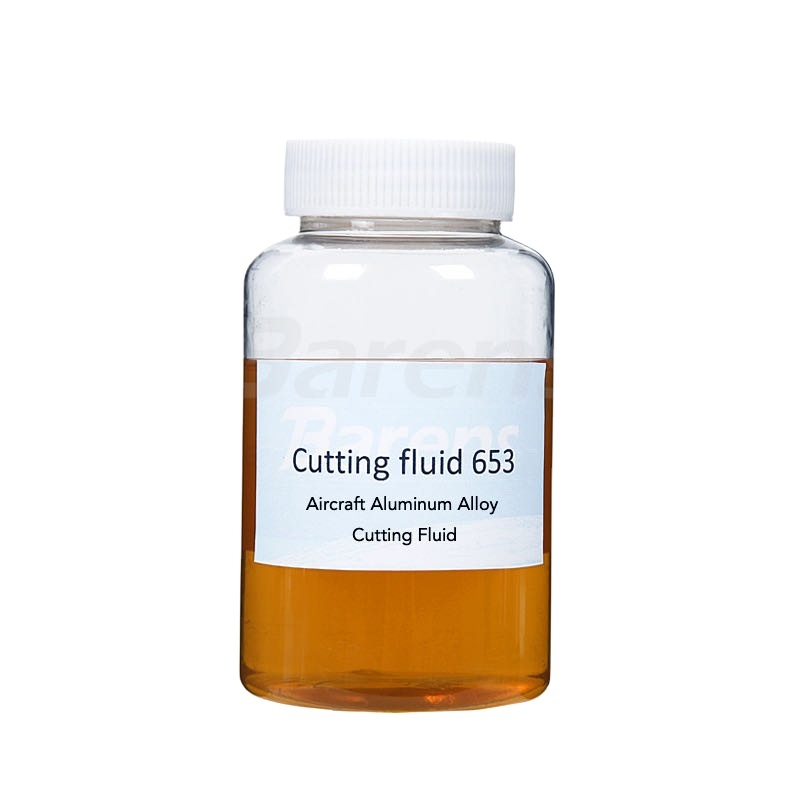Exploring the Benefits of Using Cutting and Grinding Fluids in Industrial Applications
Jun 17,2025

Exploring the Benefits of Using Cutting and Grinding Fluids in Industrial Applications
Table of Contents
- 1. Introduction to Cutting and Grinding Fluids
- 2. Importance of Cutting and Grinding Fluids in Manufacturing
- 3. Types of Cutting and Grinding Fluids
- 4. Advantages of Using Cutting and Grinding Fluids
- 4.1 Enhanced Tool Life
- 4.2 Improved Surface Finish
- 4.3 Effective Heat Dissipation
- 4.4 Efficient Chip Removal
- 4.5 Enhanced Operator Safety
- 5. Potential Disadvantages of Cutting and Grinding Fluids
- 6. Application of Cutting and Grinding Fluids in Different Industries
- 7. Best Practices for Using Cutting and Grinding Fluids
- 8. Conclusion
- 9. Frequently Asked Questions
1. Introduction to Cutting and Grinding Fluids
In the realm of industrial manufacturing, **cutting and grinding fluids** play a pivotal role in enhancing machining operations. These specialized fluids are designed to lubricate, cool, and protect both the workpiece and the cutting tool during various machining processes. By understanding the critical functions and benefits of these fluids, manufacturers can significantly boost their efficiency and output quality.
2. Importance of Cutting and Grinding Fluids in Manufacturing
Cutting and grinding fluids are essential for several key reasons. Primarily, they serve to minimize friction and wear on cutting tools, which can lead to extended tool life and reduced tooling costs. Additionally, these fluids aid in maintaining the optimal operating temperature during machining, preventing thermal deformation and ensuring precision in the finished product.
Moreover, effective cooling and lubrication enhance the overall surface finish of machined parts, leading to improved aesthetic appeal and performance reliability. Given the competitive landscape of industrial production, utilizing cutting and grinding fluids is not merely beneficial; it is often essential for maintaining a competitive edge.
3. Types of Cutting and Grinding Fluids
Understanding the different types of cutting and grinding fluids is crucial for selecting the most suitable product for specific applications. Below are the primary categories available in the market:
3.1 Oil-Based Fluids
Oil-based cutting fluids are derived from mineral oils and are widely used due to their excellent lubricating properties. They are particularly effective for heavy-duty machining operations, where high-pressure conditions are present. However, care must be taken with disposal and potential environmental impacts.
3.2 Water-Soluble Fluids
Water-soluble fluids are a mixture of water and oil, providing a balance between cooling and lubrication. They are easier to clean from workpieces and generally pose fewer environmental risks. These fluids are increasingly popular in various machining applications due to their versatility and effectiveness.
3.3 Synthetic Fluids
Synthetic fluids contain no petroleum-derived oils and are formulated from a blend of chemical compounds. They tend to offer superior cooling properties and are often used in high-speed machining operations. While they can be more expensive, their performance benefits often justify the investment in specific industries.
4. Advantages of Using Cutting and Grinding Fluids
Utilizing cutting and grinding fluids provides numerous advantages that contribute directly to enhanced manufacturing processes.
4.1 Enhanced Tool Life
One of the most significant benefits of using cutting and grinding fluids is the **extended life of cutting tools**. By reducing friction and wear, these fluids enable tools to maintain their cutting edges longer, reducing the frequency of tool replacements and downtime.
4.2 Improved Surface Finish
The quality of the surface finish is critical in many applications, especially in industries where precision is paramount. Cutting and grinding fluids facilitate better chip removal and cooling, resulting in smoother surfaces and enhanced dimensional accuracy.
4.3 Effective Heat Dissipation
During machining, heat is generated due to friction between the cutting tool and the workpiece. Cutting and grinding fluids help absorb and dissipate this heat, which prevents overheating and potential damage to both the tool and the workpiece.
4.4 Efficient Chip Removal
Effective chip removal is crucial for maintaining machining efficiency. Cutting and grinding fluids aid in carrying away chips from the cutting zone, minimizing the risk of re-cutting and ensuring a cleaner operational environment.
4.5 Enhanced Operator Safety
Safety is a paramount concern in any manufacturing environment. Cutting and grinding fluids can help mitigate risks associated with high temperatures and flying debris, thereby creating a safer workspace for operators. Additionally, many modern fluids contain additives that inhibit the growth of bacteria and fungi, promoting a healthier working environment.
5. Potential Disadvantages of Cutting and Grinding Fluids
Despite the numerous advantages, cutting and grinding fluids may also present certain challenges.
- **Environmental Impact**: Many oil-based fluids can pose environmental risks if not disposed of properly. Manufacturers must ensure they adhere to regulations regarding fluid disposal and recycling.
- **Cost**: Some advanced synthetic fluids may come at a higher initial cost, which could deter small manufacturers from adopting them.
- **Maintenance Requirements**: Maintaining fluid quality is essential for optimal performance. This requires regular monitoring and management, which can add to operational costs.
6. Application of Cutting and Grinding Fluids in Different Industries
Cutting and grinding fluids find applications across various sectors, each with unique requirements and challenges.
6.1 Automotive Industry
In the automotive sector, the need for precision and efficiency is paramount. Cutting and grinding fluids are extensively utilized in machining engine components, transmission parts, and other critical assemblies, ensuring that the stringent quality standards are met.
6.2 Aerospace Industry
The aerospace industry demands the highest precision and reliability. Cutting and grinding fluids are employed in the production of turbine blades, landing gear, and other critical components, where even the smallest deviation can have significant consequences.
6.3 Metalworking Industry
In metalworking, cutting and grinding fluids enhance the machining of various metals, including aluminum, steel, and titanium. They facilitate high-speed machining operations, ensuring that productivity levels are maintained while adhering to quality standards.
7. Best Practices for Using Cutting and Grinding Fluids
To maximize the benefits of cutting and grinding fluids, consider implementing the following best practices:
- **Regular Monitoring**: Routinely check the fluid concentration and properties to ensure optimal performance. Adjust as necessary.
- **Proper Disposal**: Follow local regulations for fluid disposal and recycling to minimize environmental impact.
- **Operator Training**: Educate operators on the importance of cutting and grinding fluids and proper maintenance to maximize efficiency and safety.
- **Fluid Selection**: Choose the appropriate fluid based on the specific machining operation and material to be processed.
8. Conclusion
In conclusion, cutting and grinding fluids are indispensable in modern manufacturing processes. Their ability to enhance tool life, improve surface finish, and promote operator safety makes them essential for a wide range of industrial applications. By understanding the types of fluids available and implementing best practices, manufacturers can significantly improve their machining efficiency and maintain a competitive advantage in the industry.
9. Frequently Asked Questions
1. What types of cutting and grinding fluids are available?
There are three main types of cutting and grinding fluids: oil-based, water-soluble, and synthetic fluids. Each type has its unique properties and applications.
2. How do cutting and grinding fluids enhance tool life?
Cutting and grinding fluids reduce friction and wear on tools, which helps maintain their cutting edges longer, ultimately extending their life.
3. Are cutting and grinding fluids environmentally friendly?
While some fluids can pose environmental risks, many modern options are designed to be less harmful. Proper disposal and recycling practices are crucial for minimizing impact.
4. How can I ensure effective cooling during machining?
Using the right type of cutting and grinding fluid is essential for effective cooling. Regular monitoring of fluid properties and maintaining proper fluid levels will also help.
5. What are the signs that cutting and grinding fluids need to be changed?
Signs that fluids need changing include changes in color, odor, viscosity, or the presence of contaminants. Regular monitoring will help determine when a change is necessary.
By utilizing cutting and grinding fluids effectively, manufacturers can optimize their machining processes and significantly enhance product quality.
Previous:
Contact Us
E-mail:
Weihao@barens.cn
Mobile/Wechat/Whatsapp:
+(86)18595692582
Address:
No.9, Industrial Zone, Wangqu Village, Qinyang City, Jiaozuo City, Henan Province, China
TEL: +86 037186158618
Fax number: +86371-86158608
Contacts: Davi
Mobile/Wechat/Whatsapp: (+86)18595692582
Email: weihao@barens.cn
Contacts: Doris
Mobile/Wechat/Whatsapp: (+86)18211801290
E-mail: Doris@barens.cn
Address:No.9, Industrial Zone, Wangqu Village, Qinyang City, Jiaozuo City, Henan Province, China
Website construction: 300.cn | SEO | Digital card
This site supports IPV4/IPV6 access
COOKIES
Our website uses cookies and similar technologies to personalize the advertising shown to you and to help you get the best experience on our website. For more information, see our Privacy & Cookie Policy
COOKIES
Our website uses cookies and similar technologies to personalize the advertising shown to you and to help you get the best experience on our website. For more information, see our Privacy & Cookie Policy
These cookies are necessary for basic functions such as payment. Standard cookies cannot be turned off and do not store any of your information.
These cookies collect information, such as how many people are using our site or which pages are popular, to help us improve the customer experience. Turning these cookies off will mean we can't collect information to improve your experience.
These cookies enable the website to provide enhanced functionality and personalization. They may be set by us or by third-party providers whose services we have added to our pages. If you do not allow these cookies, some or all of these services may not function properly.
These cookies help us understand what you are interested in so that we can show you relevant advertising on other websites. Turning these cookies off will mean we are unable to show you any personalized advertising.
SAF Coolest v1.3.1.2 设置面板 GAGSD-AGYF-JAAAE-ADE
无数据提示
Sorry, the current column is being updated, please look forward to it!
You can view other columns or returnHome Page



